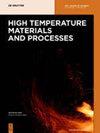金属铜氧化行为在火灾调查中的应用
IF 1.5
4区 材料科学
Q4 MATERIALS SCIENCE, MULTIDISCIPLINARY
引用次数: 0
摘要
摘要在火灾调查中,最重要的方面是确定火灾现场是否存在液体促进剂。在火灾案件的审判中,促进剂的存在与否是关键证据。暴露在高温下,金属物质会发生氧化,这可能是由火灾中的促进剂引起的。金属表面发现的氧化物和基质提供了有关火灾特征的宝贵信息,包括暴露温度、持续时间和液体促进剂的参与。在本研究中,我们使用乙醇燃烧研究了铜在模拟火焰环境中的高温氧化行为。氧化后,通过观察、X射线衍射、X射线光电子能谱、透射电子显微镜和扫描电子显微镜以及能量色散光谱分析,对试样的形态、氧化物相组成和微观结构特征进行了表征。在样品表面发现了具有六边形结构的元素碳,这可能是不完全燃烧和乙醇的化学成分。铜在(111)晶面上具有优选的氧化物取向,这不同于在普通热空气中的氧化,后者与(111)结晶面的大库仑力有关。燃烧引起的热空气对流可能导致铜表面大面积的氧化层破裂和剥落。金属的氧化物性质和表面状态在很大程度上取决于氧化持续时间、温度和气氛。这些数据应为确定火灾现场是否存在燃烧促进剂提供参考信息。本文章由计算机程序翻译,如有差异,请以英文原文为准。
Application on oxidation behavior of metallic copper in fire investigation
Abstract In fire investigations, the most important aspect is determining the presence of a liquid accelerant at the fire scene. The presence or absence of accelerants is critical evidence during trials for fire cases. Upon exposure to high temperatures, metallic substances undergo oxidation, which can be imparted by accelerants in the fire. Oxides and substrates found on metal surfaces offer valuable information on the characteristics of fire, including exposure temperature, duration, and involvement of a liquid accelerant. In this study, we investigated the oxidation behavior of copper at high temperatures in a simulated flame environment using ethanol combustion. After oxidation, the morphological, oxide phase composition, and microstructural features of specimens were characterized by observation, X-ray diffraction, X-ray photoelectron energy spectroscopy, transmission electron microscopy, and scanning electron microscopy with energy-dispersive spectroscopic analysis. The elemental carbon with a hexagonal structure deposited on the sample’s surface was found, which may be incomplete combustion and the chemical composition of ethanol. Copper has a preferred orientation of oxide on the (111) crystal plane, which differs from oxidation in ordinary hot air that is related to the large Coulomb force of the (111) crystal plane. Hot air convection due to combustion may cause large areas of oxide layer on the copper surface to crack and peel. Oxide properties and surface state of metals strongly depended on oxidation duration, temperature, and atmosphere. These data shall offer reference information for determining the presence of combustion accelerants at fire scenes.
求助全文
通过发布文献求助,成功后即可免费获取论文全文。
去求助
来源期刊

High Temperature Materials and Processes
工程技术-材料科学:综合
CiteScore
2.50
自引率
0.00%
发文量
42
审稿时长
3.9 months
期刊介绍:
High Temperature Materials and Processes offers an international publication forum for new ideas, insights and results related to high-temperature materials and processes in science and technology. The journal publishes original research papers and short communications addressing topics at the forefront of high-temperature materials research including processing of various materials at high temperatures. Occasionally, reviews of a specific topic are included. The journal also publishes special issues featuring ongoing research programs as well as symposia of high-temperature materials and processes, and other related research activities.
Emphasis is placed on the multi-disciplinary nature of high-temperature materials and processes for various materials in a variety of states. Such a nature of the journal will help readers who wish to become acquainted with related subjects by obtaining information of various aspects of high-temperature materials research. The increasing spread of information on these subjects will also help to shed light on relevant topics of high-temperature materials and processes outside of readers’ own core specialties.
 求助内容:
求助内容: 应助结果提醒方式:
应助结果提醒方式:


